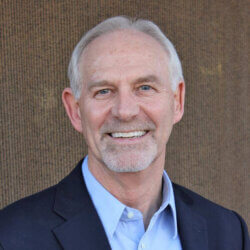
1 min readWhy People Resist Change
by Guy Gage | June 9, 2025 | Business, Leadership, Performance
In accounting firms—where structure, predictability, and precision are part of the culture—resistance to change is often interpreted as stubbornness or a lack of buy-in. But resistance isn’t irrational. It’s a natural form of self-protection. When a proposed change feels unsafe or uncertain, professionals instinctively react by slowing down, questioning, or even disengaging.
Self-Protection
What are they protecting against? Three common triggers drive resistance:
- Uncertainty
Accountants thrive on clarity, accuracy, and planning. When change introduces ambiguity—such as vague timelines, undefined roles, or shifting expectations—it threatens he sense of control that many professionals rely on to perform with confidence. If team members don’t know what’s coming or what’s expected of them, they will hesitate. That hesitation is protective, not passive-aggressive. - Perceived Unfairness
Whether it’s changes to workload distribution, promotions, access to information, or decision-making processes, anything that seems inequitable can provoke pushback. In accounting firms where hierarchy and performance evaluations are taken seriously, fairness is not just a value—it’s a currency. Even the appearance of favoritism or inconsistent standards will derail engagement with a new initiative. - Risk
In professional services, reputation and career risks loom large. If a change initiative threatens a team member’s ability to deliver high-quality work, meet deadlines, or maintain client trust, they will understandably resist. The stakes are high. Without assurances that risks are acknowledged and mitigated, even your best people will hesitate to step forward.
Change Leaders
To lead a change initiative effectively—whether it’s implementing new technology, restructuring teams, or revising client service models—you must plan with these protective instincts in mind. Resistance is not a barrier to manage after roll-out. It’s a reality to anticipate before you communicate, while you execute, and as you follow up.
Effective change leadership doesn’t mean convincing people to stop resisting. It means making the change feel safer, fairer, and less risky—because when professionals feel protected, they’re more willing to engage, adapt, and lead the way forward.
Read Related Blogs:
Closing the Year with Gratitude and Renewal
As the calendar winds down, professionals everywhere find themselves reflecting not only on goals achieved but also on the deeper meaning of this season. The end of the year is more than a checkpoint on a timeline - it’s a powerful reminder of resilience, connection,...
Facing The Lions
Our inbred fear response is well-known: when confronted with a perceived danger, our mind and body prepare to fight, flee or freeze. A fairly recent discovery is an additional response called fawning - placating or appeasing to neutralize the threat. While we each...
Strategy Isn’t a Luxury – It’s a Lifeline for CPA Firms
As year-end approaches, we often find ourselves in survival mode - juggling deadlines, client demands, and the whirlwind of the holiday season. It’s tempting to shelve strategic planning until “things calm down.” But here’s the truth: strategy isn’t a luxury reserved...


